The first actual stop on my California coastal garden tour was the little oceanside town of Carpinteria, just south of Santa Barbara. A friend spends several weeks there each winter and I wanted to have a look at it. Let me see, shovel snow in Toronto the entire month of February, or read books and gaze out on the ocean from one of these balconies? Hmmmm… tough choice. 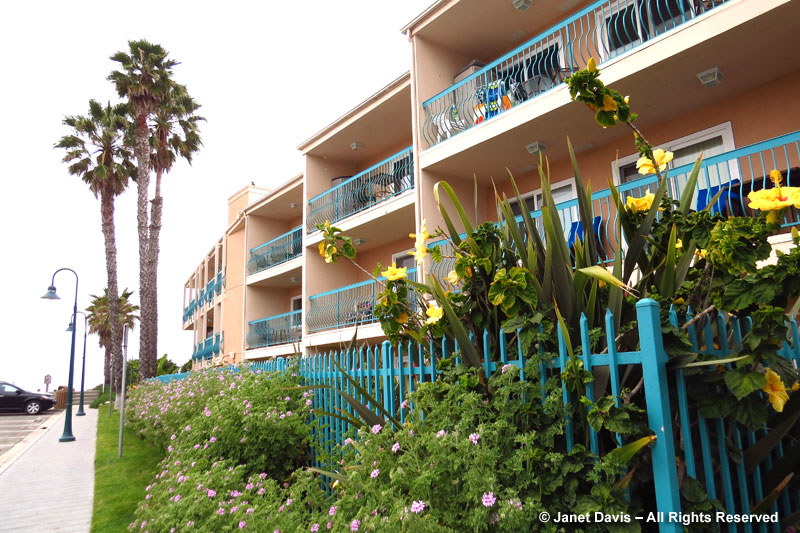
Carpinteria has a population of around 13,000. It hosts the California Avocado Festival on the first weekend of every October. There’s a lovely beach for walking and whale-watching, but the naturally occurring surface asphalt in this petroleum-rich area sometimes presents a sticky hazard for beachcombers. That asphalt, incidentally, is how the town got its name, for in 1769 Spanish soldiers found the native Chumash Indians building and repairing their canoes around “some springs of pitch”. So they called the area La Carpinteria, meaning “carpenter shop”. Tar Pits Park celebrates the designation of Carpinteria as one of five natural asphalt lake areas in the world. During the winter, whales can often be spotted offshore here. The weather in late March was a little chilly for beach picnicking, but it didn’t stop these intrepid women. 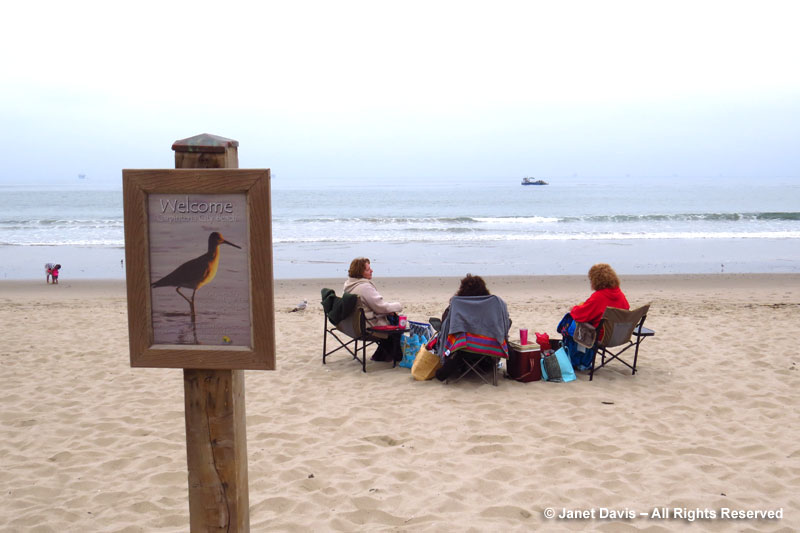
At the far end of the beach was the Carpinteria Salt Marsh Preserve, a series of coastal estuaries between the Santa Ynez Mountains, the creeks that drain them, and the sea.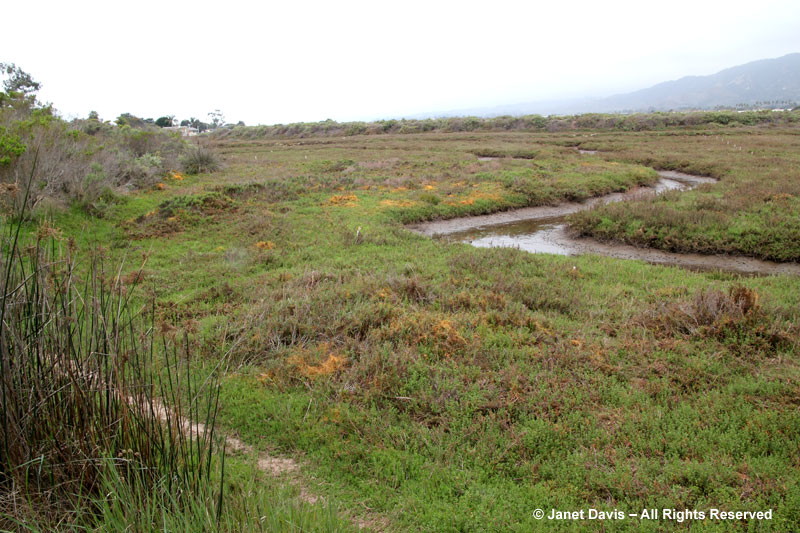
A favourite spot for birdwatchers, the salt marsh was quiet the Monday morning I walked its path and read its interesting interpretive signs.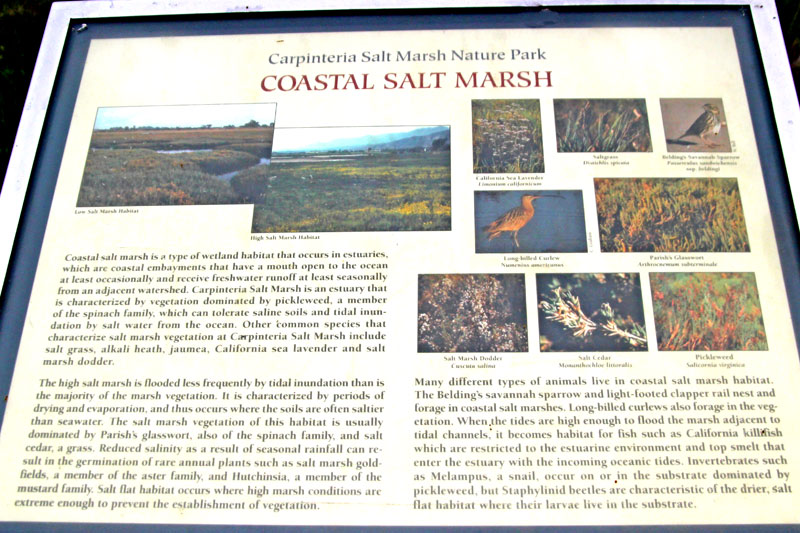
Driving through town, I had my first look at the kinds of colourful shrubs and flowers that grace this part of the state in early spring. In an effort to adapt to California’s three-year drought, many gardeners are turning to the state’s own drought-resistant native flora, but the message didn’t seem to resonate with gardeners here. Almost all the landscaping consisted of plants native to somewhere else in the world, South Africa, the Mediterranean or Australia. But they are beautiful and were balm for this winter-weary soul.
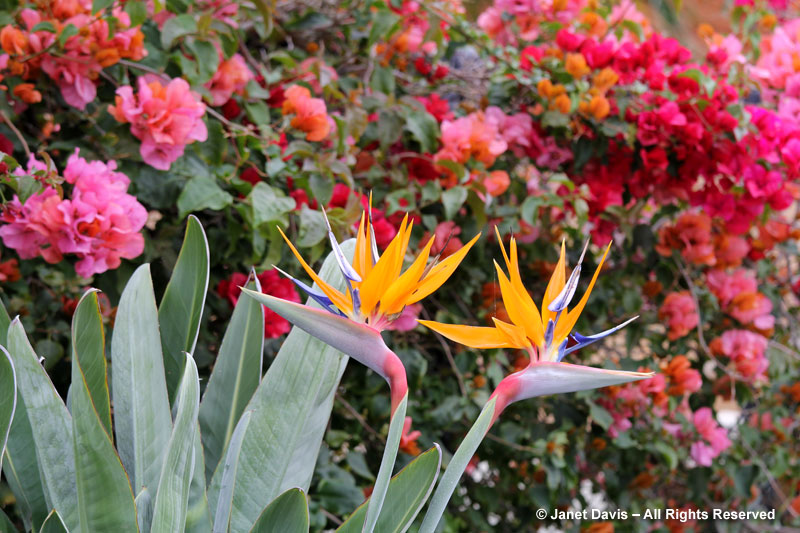
Bird-of paradise (Strelitzia reginae) from South Africa and bougainvillea from South America.
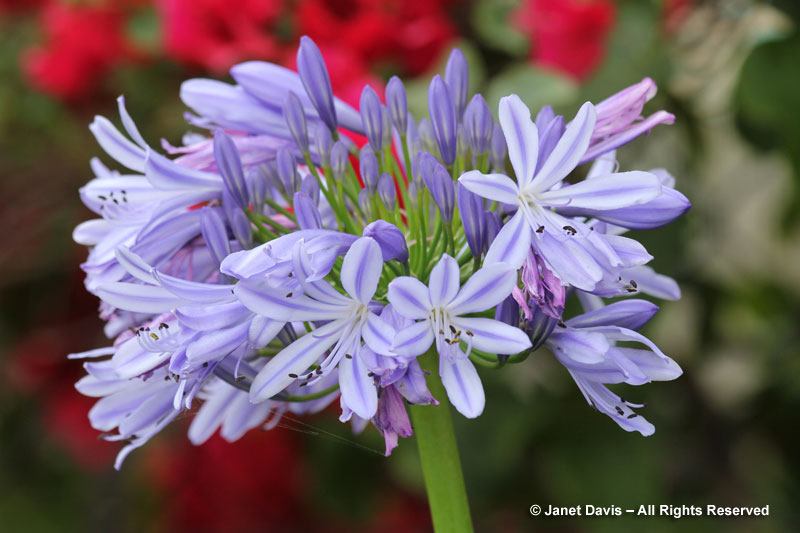
Agapanthus (A. africanus) (A. praecox — thank you David Feix!)
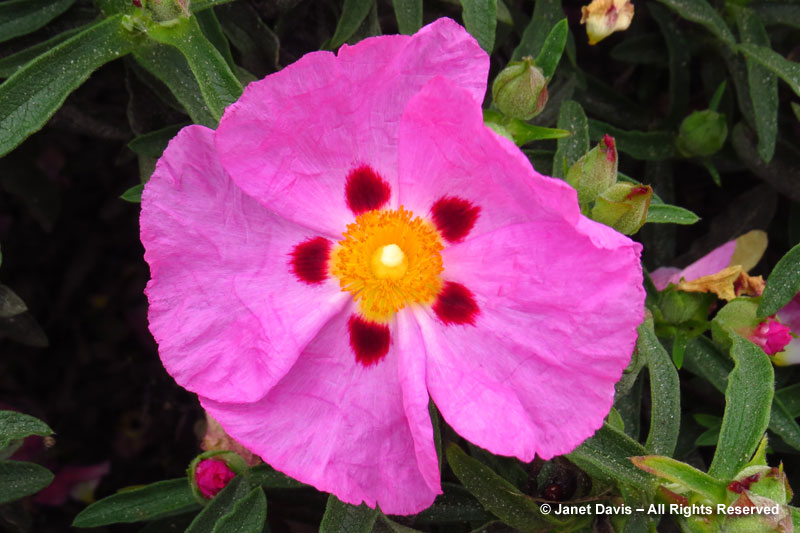
Purple rock rose (Cistus x purpureus) from the Mediterranean.
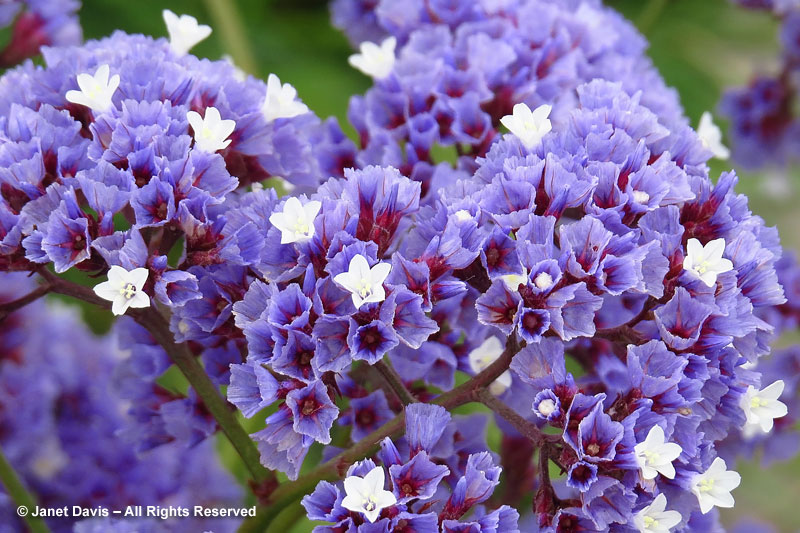
Sea lavender (Limonium perezii) from the Canary Islands.
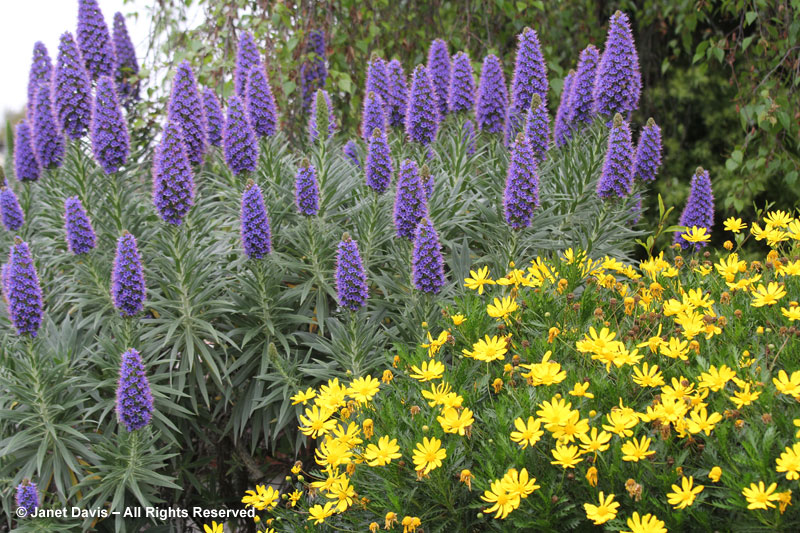
Tall purple pride-of-Madeira (Echium candicans) from the Portugese island of the same name and yellow daisy bush (Euryops pectinatus) from South Africa.
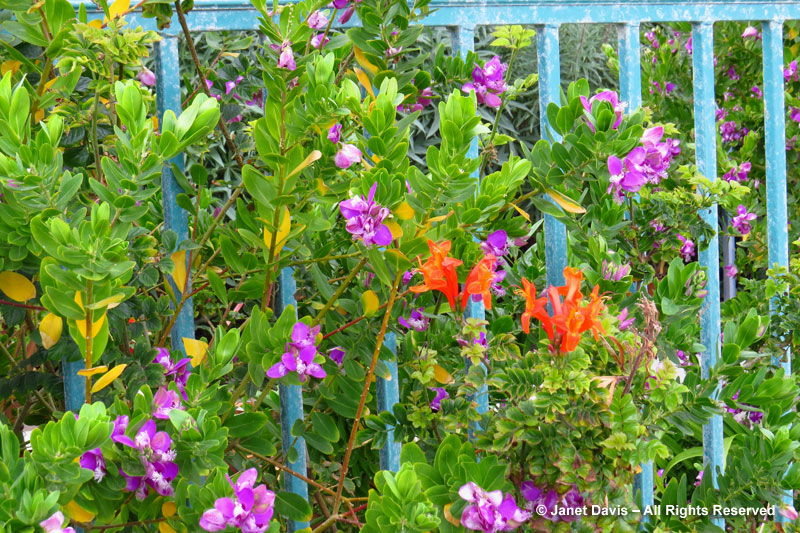
‘Bibi Pink’ sweetpea shrub (Polygala myrtifolia) and cape Honeysuckle (Tecomaria capensis) against a saltwater-sprayed iron fence at the beach. 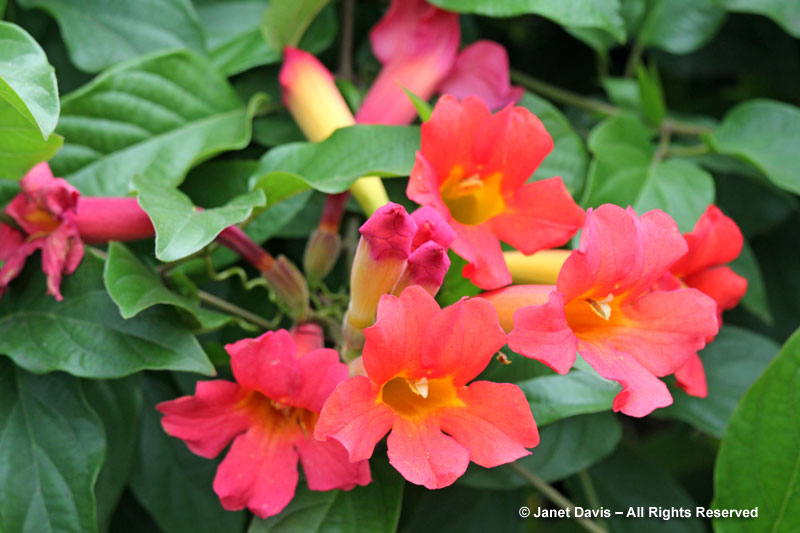
The spectacular blossoms of the gorgeous red trumpet vine (Distictis buccinatoria) from Mexico were blanketing walls and fences in town.
In an upcoming blog, I’ll introduce you to one of my favourite stops on the entire trip: a charming garden-centre-cum-display-garden in Carpinteria called Seaside Gardens.
